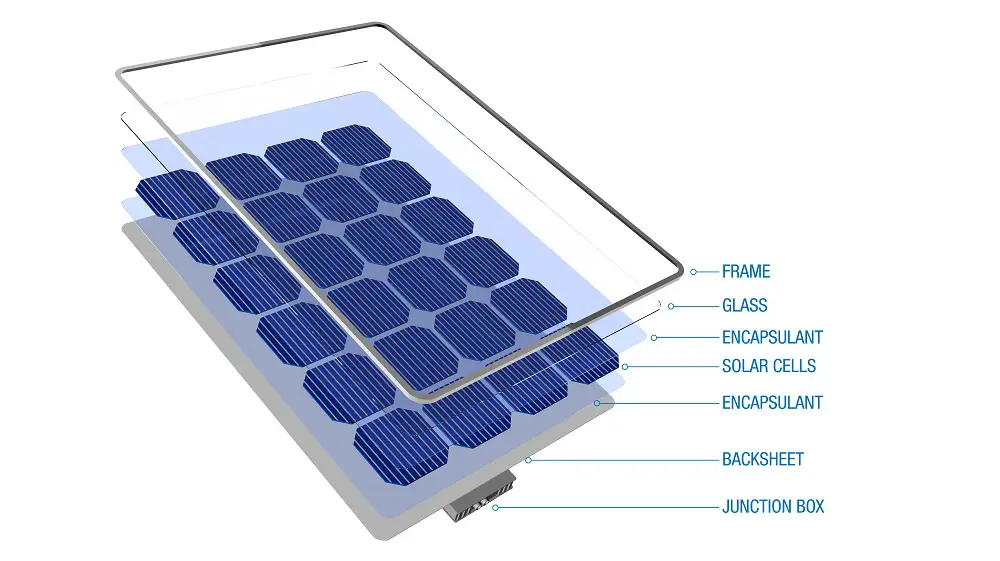There is a wide range of technologies used to actively harness solar energy, including photovoltaics, solar heating, solar thermal energy, artificial photosynthesis, solar architecture, and molten salt power generation.
Solar energy comes from the sun as radiant energy in the form of both heat and light. The sun is infinite; it is calculated that it will be at least 5 billion years before it begins to show any sign of deterioration. Therefore, it is safe to say that solar is renewable and not non-renewable.
However, not all renewable energy is sustainable, that is to say, it has no serious consequence to the earth after long-term use.
The Definition of Renewable Energy

Renewable energy is simply energy that is available and does not diminish in stock despite the current rate of use. In other words, renewable energy is a form of energy that is in infinite supply and using it today does not diminish its supply in the future.
That said, however, classifying energy sources as renewable can be difficult. For instance, when you bring in the issue of large timescale, no energy source is truly renewable.
While the sun has been in existence for 4.6 billion years, and it has been present throughout the existence of human species, there will come a time when it will no longer exist.
Approximately 600 million tons of hydrogen fuse into helium every second in the core of the sun. In this process, 4 million tons of matter is converted into energy. However, astronomers estimate that in about 5 to 10 billion years, the sun will run out of hydrogen and eventually die. As such, in the grandness of time, even solar energy that we receive here on planet earth is finite and will come to an end. In this line of thought, solar energy is not a pure renewable/endless energy source.
Humans, however, have a hard time grasping timescale running into billions of years. Additionally, it does not make sense to look that far into the future. It is for this reason that we add a caveat of the human timescale when defining the renewability of energy sources. Confining timescales to limits brings solar energy into the renewable energy source bracket.
Aside from the timescale involved in the replenishment of the energy source, the definition of what a renewable energy source is, also takes into consideration the rate of use and replenishment.
A renewable energy resource is a source whose rate of natural replenishment negates diminishing of stock or the availability of the resource in the future. In this regard, the rate of energy harvest should not affect the rate of energy generation in the future.
In the case of solar energy, the amount of solar energy that humanity harvests does not affect the energy produced in the future.
This is in stark contrast to non-renewable energy sources such as fossil fuels. Fossil fuels are created over millions of years. At the current rate of extraction, there is no feasible way to replenish the fossil fuels. As such, once the oil deposits are exhausted, there is no more oil to extract. This makes fossil fuels a non-renewable source of energy.
Solar energy is, therefore, renewable since it is continuously replenished and within the human timescale.
Other Elements to Consider When Defining Renewability of Solar Energy
Granted, we will continue receiving solar radiation on earth for the foreseeable future. It is essential, nonetheless, to factor in the technology that makes the harnessing of solar energy possible. To this end, we should ask whether:
- The devices used to manufacture solar-energy harnessing devices are abundant or rare
- If the materials used to harness solar energy are recyclable.
For instance, to generate electricity from solar radiation, use photovoltaic technology. As such, the materials used in the manufacture of solar panels should be abundant and should be recyclable. In the case of solar panels, the cells are made of silicon, the second most abundant material in the earth’s crust (oxygen is the most abundant element in the earth’s crust). Additionally, solar panels use rare earth minerals, copper for wiring, and aluminum for framing.
Furthermore, after the typical 25 years lifespan of solar panels, almost all of the glass in the solar panel can be reused while the copper, aluminum, and rare earth minerals can be recycled. This means that in the case of electricity generation from solar energy using solar panels, there is ample material to continue manufacturing solar panels.
Renewable Energy vs Sustainable Energy
Among the masses, many people use renewable energy interchangeably with sustainable energy sources. However, it is essential to distinguish between these two definitions. As defined above, renewable energy is an energy source that replenishes naturally despite the current rate of use on a human timescale.
Sustainable energy, on the other hand, takes into consideration the energy source, the emissions from the energy sources, the manufacturing process, and the disposal of the energy source of energy-harnessing equipment. Sustainability covers the entire cycle of energy production.
Regarding its renewability, solar energy is renewable as the sun continuously produces solar radiation. Moreover, the sun will continue to provide the earth with ample solar energy for the foreseeable future.
On the emission front, solar radiation is clean. It does not produce toxic by-products. For instance, when we use solar panels to produce electricity, the solar panel will create zero carbon emissions. Compare this to the over 3,000,000 lbs of CO2 that a typical coal power plant produces annually.
The Negative Environmental Impact of Solar Power

However, since sustainability takes into consideration all factors, it is important to consider how the solar panels are manufactured, which has been contentious in recent years.
The production of solar panels does produce CO2 and sulfur dioxide, albeit in small amounts. There is also an intensive use of electricity and the production of toxic chemical by-products to contend with.
Production of solar panels relies heavily upon quartz, the natural mineral extracted from the earth that can be easily converted into silicone for the absorption and conduction of solar rays.
However, refining quartz to pure silicon is an energy-intensive process that produces carbon dioxide and sulfur dioxide.
Silicon refining processes also make of hydrochloric acid. This creates silicon tetrachloride, which is a toxic substance. On the other hand, cleaning the silicon wafer that makes the PV cells requires the use of hydrofluoric acid.
There have been cases of accidental or deliberate discharge of the toxic chemicals used in the manufacturing process or produced as by-product which harm the environment. As such, while solar energy is an entirely renewable source, it is, however, not 100% sustainable.
Companies and governments have taken steps to lower the emission related to the manufacturing process of solar energy technology. For instance, the government of China, a leading manufacturer of solar panels, require manufacturers to recycle a minimum of 98.5% of the silicon tetrachloride.
Studies are ongoing to eradicate the use of tetrachloride. With the pace at which solar technology is advancing, this shouldn't be in the too distant future.
Solar Power Sustainability Score
Although solar panels generate 30 times more power during their lifetime than they use to be manufactured, their sustainability is still regularly called to account.
The Silicone Valley Toxics Coalition releases an annual scorecard that rates every solar manufacturer and assigns them with a sustainability score.
Several factors are monitored before each company receives its rating, shown as a percentage.
Solar panel manufacturers are scored on their responsibility to workers, communities, the environment, and their commitment to recycling.
Material and water usage are monitored, along with emission reduction, and toxicity levels.
The sustainability rating is a well-regarded solar industry standard.
How Does Solar Energy Work?
Creating electricity from the sun's energy requires the installation of solar panels, usually on a sloped roof to maximize the opportunity to enhance as much radiant energy as possible.
The suns rays are formed from ultra-violet, infra-red, and visible rays, The first two cannot be seen, visible rays present as the colors we see all the time.
A solar panel consists of a layer of silicon cells within a metal frame. It is sealed in a glass case and has protective layers from humidity and to prevent heat dissipation. It also contains a series of wires used to transport generated power.
- When light hits the cell it is absorbed as silicone as a non-metal with conduction properties
- This interaction causes electrons to set in motion, creating a flow of electric current.
- The internal wires capture this current in its present state, DC, Direct Current.
- The wires transfer it to a solar inverter where it is converted to AC, Alternating Current, the electricity most used in homes and businesses.
Some consumers are concerned that solar power only generates electricity on bright and sunny days. Whilst this is true, it also produces excess power, which is sent back to the grid via a Netmeter. In essence, the grid is buying your spare electricity, crediting it on your utility bill.
On dull, wintry days, this credit is used to cover any shortfall.
If you use more electricity annually than the panels produce, there will be no break in supply, you will still receive power from your supplier and be charged per kilowatt.
Solar Energy Technologies
As stated above, there are several technologies used to harvest solar energy. Some technologies are scalable while others work best on large scale farms. The three mainstream means to harness solar power include:
1. Photovoltaic Systems (PV)

Photovoltaic systems are the most ubiquitous means by which humans harness solar energy. PV systems are designed to convert the light portion of the solar radiation to electricity.
At the core of the system is the solar cell. These are thin films of silicon-based cells that convert photons of solar radiation to direct current electricity. The other crucial component of a PV system is the inverter, which converts DC to alternating current.
Depending on the complexity of the PV system, it will also have a mounting system, a sun tracker, a battery, a monitoring system, and a metering system.
PV systems are scalable and range in size, scale, and complexity. For instance, there are simple stand-alone systems installed in residential homes, grid-connected systems, building integrated systems, and even large-scale utility systems.
2. Concentrated Solar Power
Concentrated solar power converts solar radiation to energy by concentrating a large area of sunlight using mirrors or lenses to a small area receiver.
At the receiver, the solar radiation is converted to heat and transferred to the heat engine to steam for electricity generation. This form of solar power is usually developed at a large scale owing to the land required and the capital needed to set up the project.
3. Solar Water Heating
For this technology, thermal collectors are used to convert solar radiation to heat for water heating. Harnessing solar energy in this form is scalable. Not only is it used for small scale domestic water heating, but it is also used for large scale industrial heating.
Final Thoughts
The question is solar power renewable or non-renewable takes us to the point that the sun has enough fuel to emit protons for billions of years, meaning, as a root power source it is very much renewable.
The United Nations state “development that meets the needs of the present without compromising the ability of future generations to meet their own needs." The sun's energy can be used without diminishing its future availability.
Although there are a few environmental concerns, the benefits from solar power far outweigh any negatives. With new technology being discovered regularly, and reuse and recycling, we are looking to a future where solar energy is truly sustainable as well as renewable.

